












The magazine of the art-form of the photo-essay
“A free, really high quality photo-essay magazine. Fabulous!”
Stephen Fry. British actor, writer and film & documentary maker

July 2014 back issue
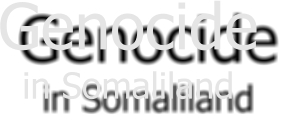
by Alison Baskerville


Human remains are revealed in a grave site in the Somaliland capital of Hargeisa. The excavation is part of an
ongoing effort by International students from a Peruvian based forensic anthropology team known as Equipo Peruino
de Antropologia Forense (EPAF) who have arrived in the country to exhume some of the estimated 50,000 to 60,000
people killed between 1988 and 1991 by the former dictator Mohamed Siad Barre.
Somaliland is currently an unrecognised self-declared de facto sovereign state. This has left the area with few
resources to conduct the exhumation of the remains and the ability to prosecute those involved in the massacre.
According to the Somaliland War Crimes Investigation Committee (WCIC) the massacre began after a tribe known as
the Isaaq began an uprising against Biarre's regime. He responded by ordering the execution of all members of this
clan.
“1988 was total chaos. Men, women and children were taken to killing sites by the army and shot. The bodies were
dumped across the city and buried with bulldozers.” Stated Mahamoud Abdi, an employee with the WCIC.
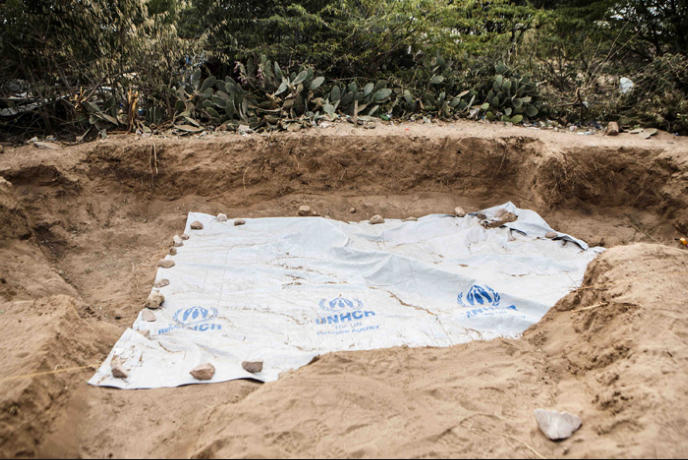
A tarpaulin covers the remains in one of the three grave sites which have been recently excavated.
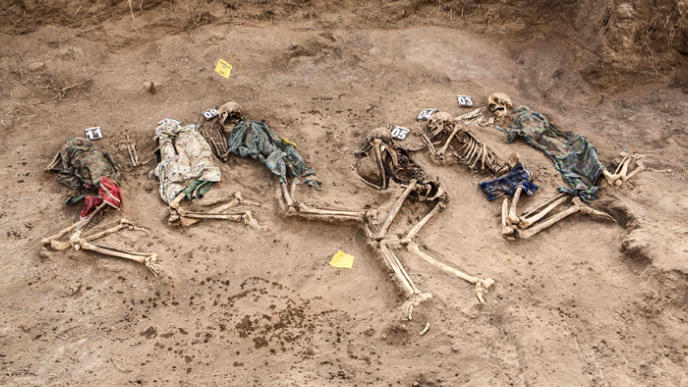
Six bodies lie inside the grave. The students have now recovered a total of 44 remains and are now beginning to look
at a fourth site.
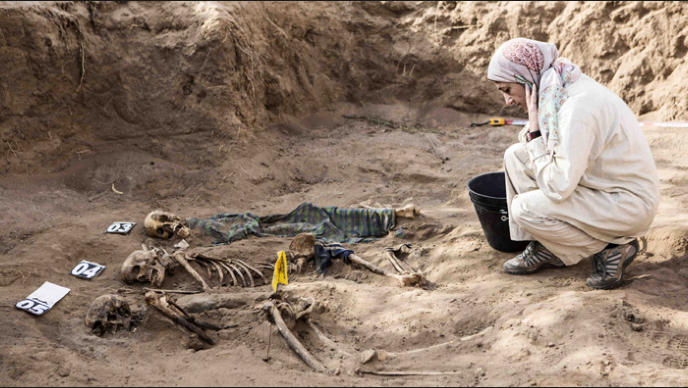
Carmen Rodriguez (51) from Bilbao, Spain studies the human remains.
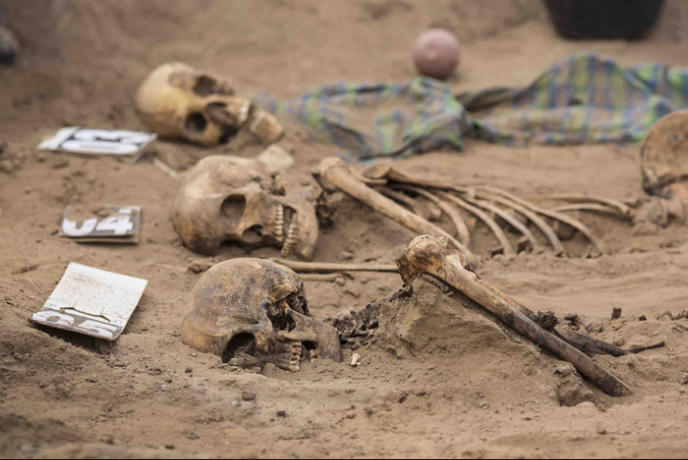
Each body must be identified with a number and carefully removed. Every attempt will be made to establish the cause
of death, age and sex of each person.

Somaliland is an autonomous region which is not recognised as a country. This will make it very difficult for their
government to bring those involved in the massacre to justice.
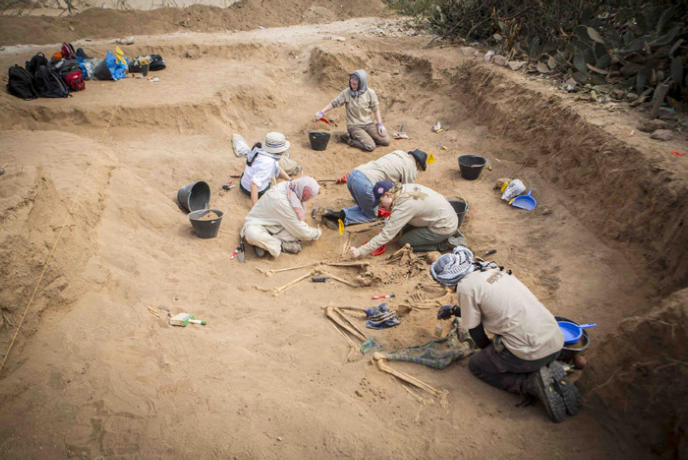
The Somaliland government are now relying on the Peruvian based field school to excavate some of the estimated
50 – 60,000 remains.
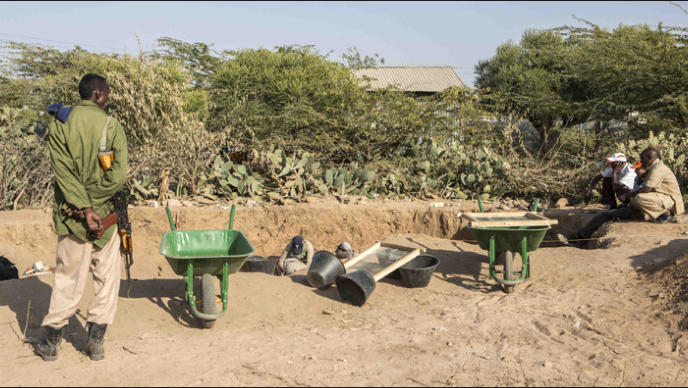
A member of the Somaliland Special Police Unit (SPU) stands and guards the site.
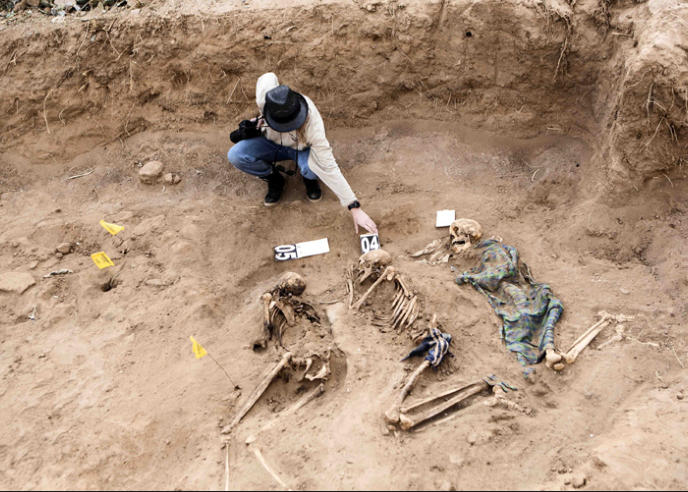
Lucia Elgerud (27) from Sweden numbers each of the victims.
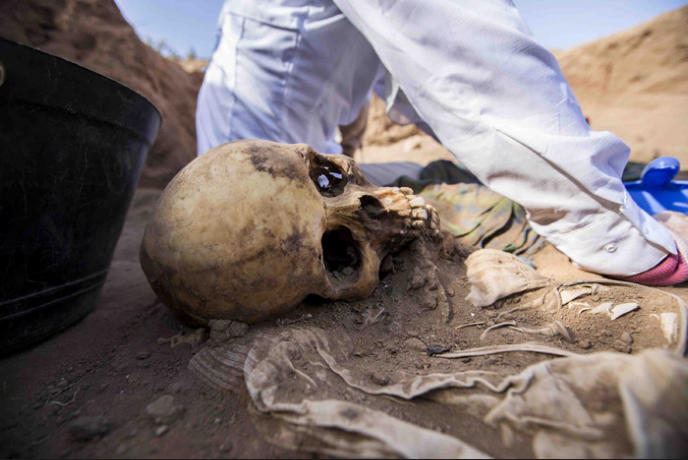
“Hargeisa is a graveyard” states Jose Pablo Baraybar, the forensic expert in charge of EPAF. “Some say there are
200,000 bodies under the ground. Nobody really knows. That's why we have to get the record straight.”
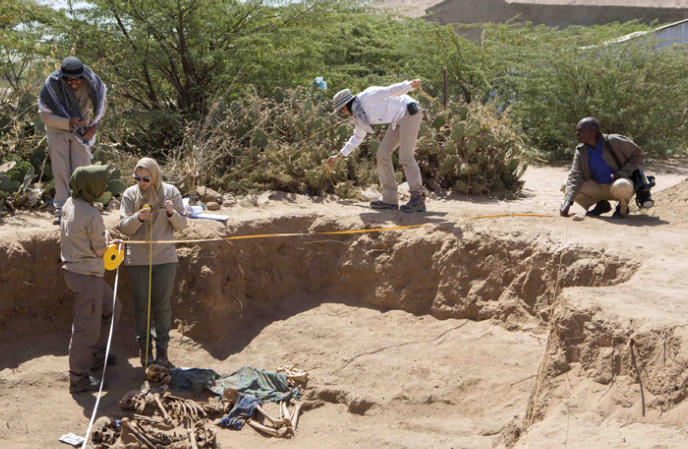
The team must take exact measurements of the grave before the remains are removed.
Soil is sifted from the grave in an attempt to find smaller bones and fragments of hair and tissue which will help to
identify the remains and possible cause of death.
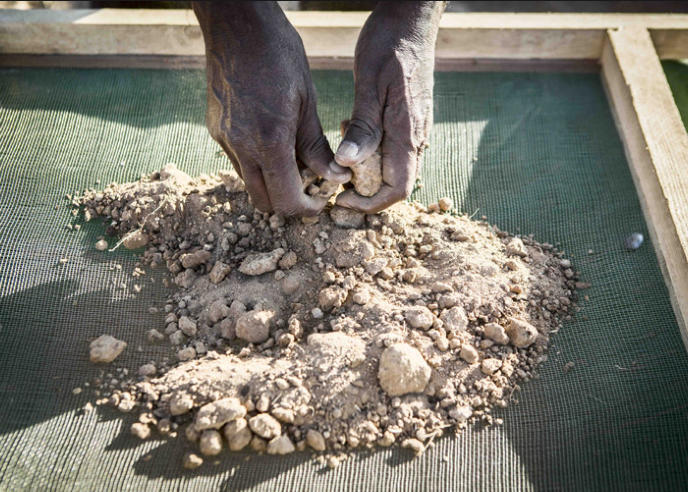
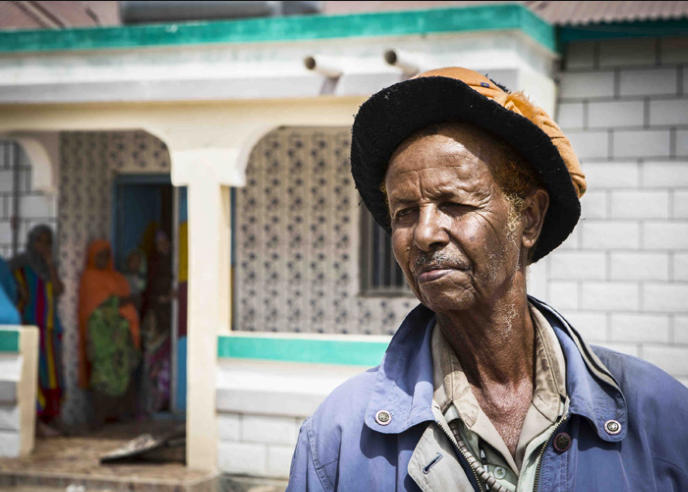
Yusuf Mohamed Duwali (80) witnessed the digging of two grave sites near his home in Hargeisa, Somaliland. "When I
walked from my house I would walk past the open graves. The military were shooting people near our village and just
dumping their bodies."
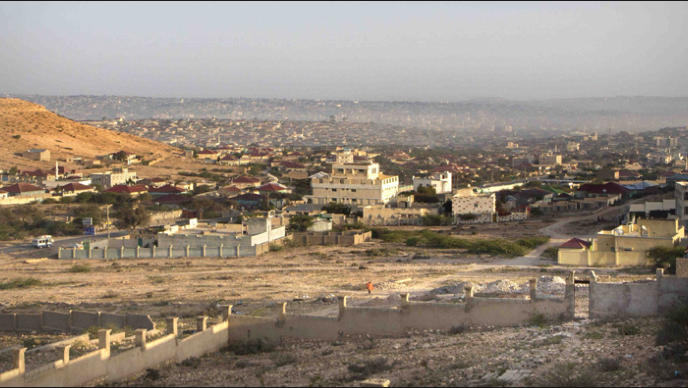
Hargeisa is home to a population of 1,000,000 people and has remained an unrecognised self-declared de facto
sovereign state. Located between Dijbouti and Somalia it has fought for independence since 1991.
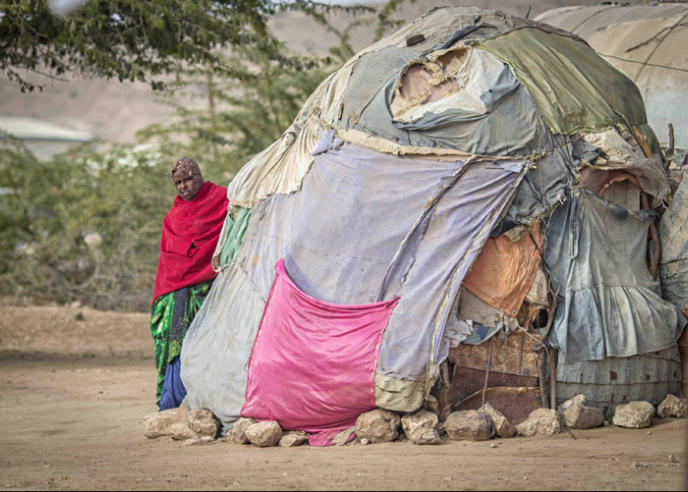
Many of the population in Hargeisa are living in poverty.
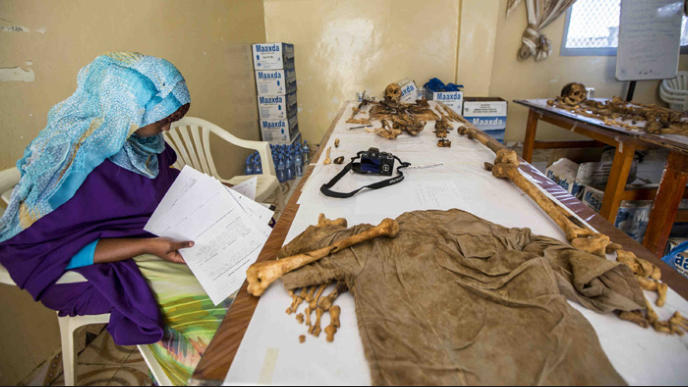
Ikram Ahmed Yousuf (24) studies the remains in a makeshift lab in Hargeisa.
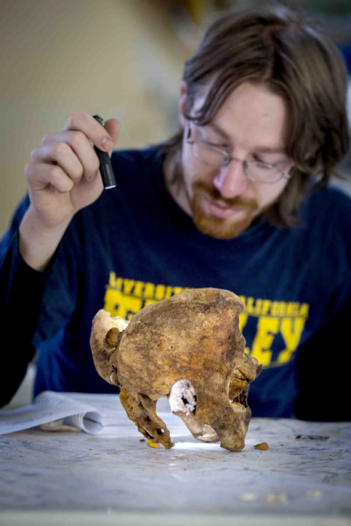
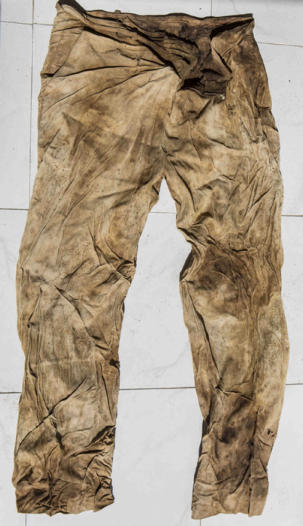
Stefano Prost (31) from Austria uses his torch to study the
pelvis of one of the victims.
Even items of clothing are excavated as they may
reveal information about the identity of the victim.
Holes in the trousers also identify possible entry and
exit wounds that may relate to damage on the victims
remains.


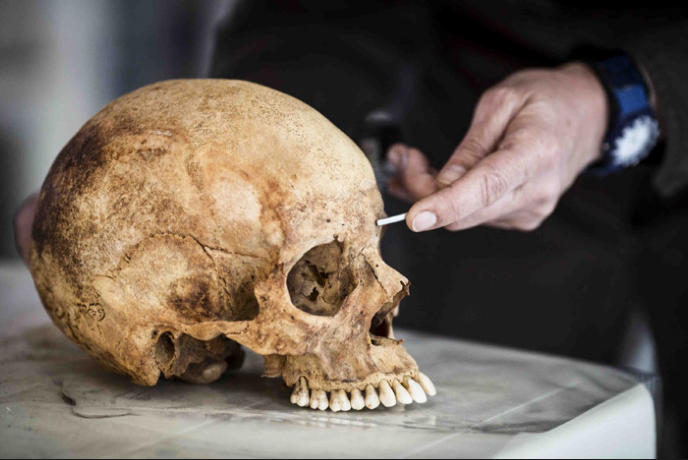
The measurement of the skull will help to identify the origin and possibly the sex of the victim.
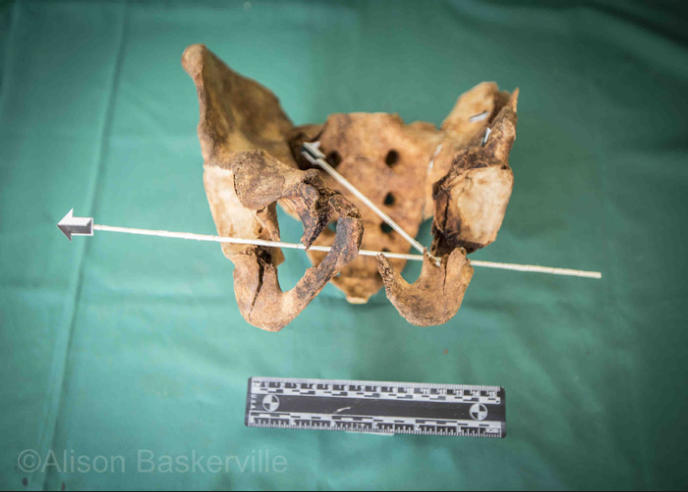
A pelvis is marked with the trajectory path of bullets to establish how and where the victim was shot.









